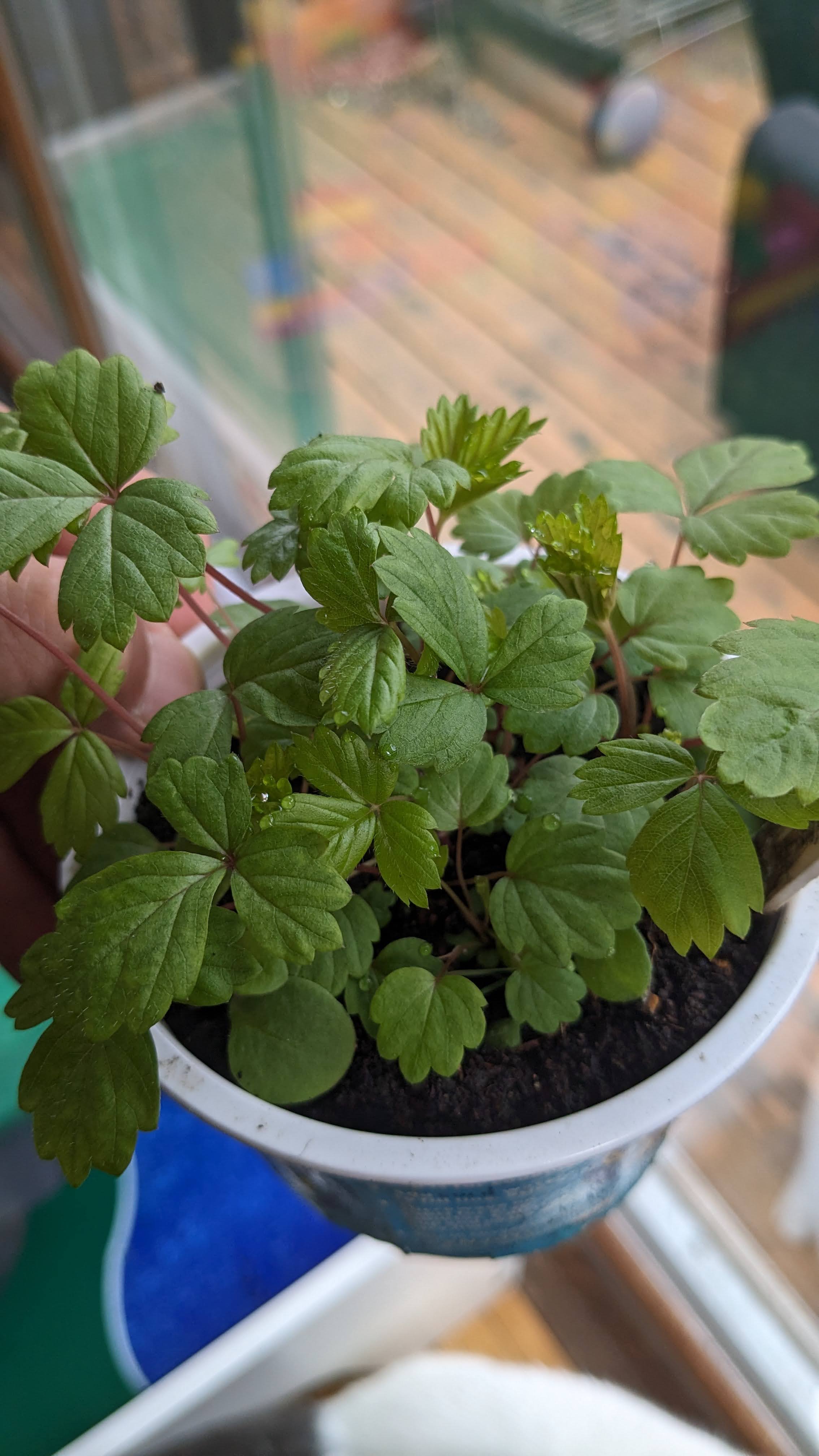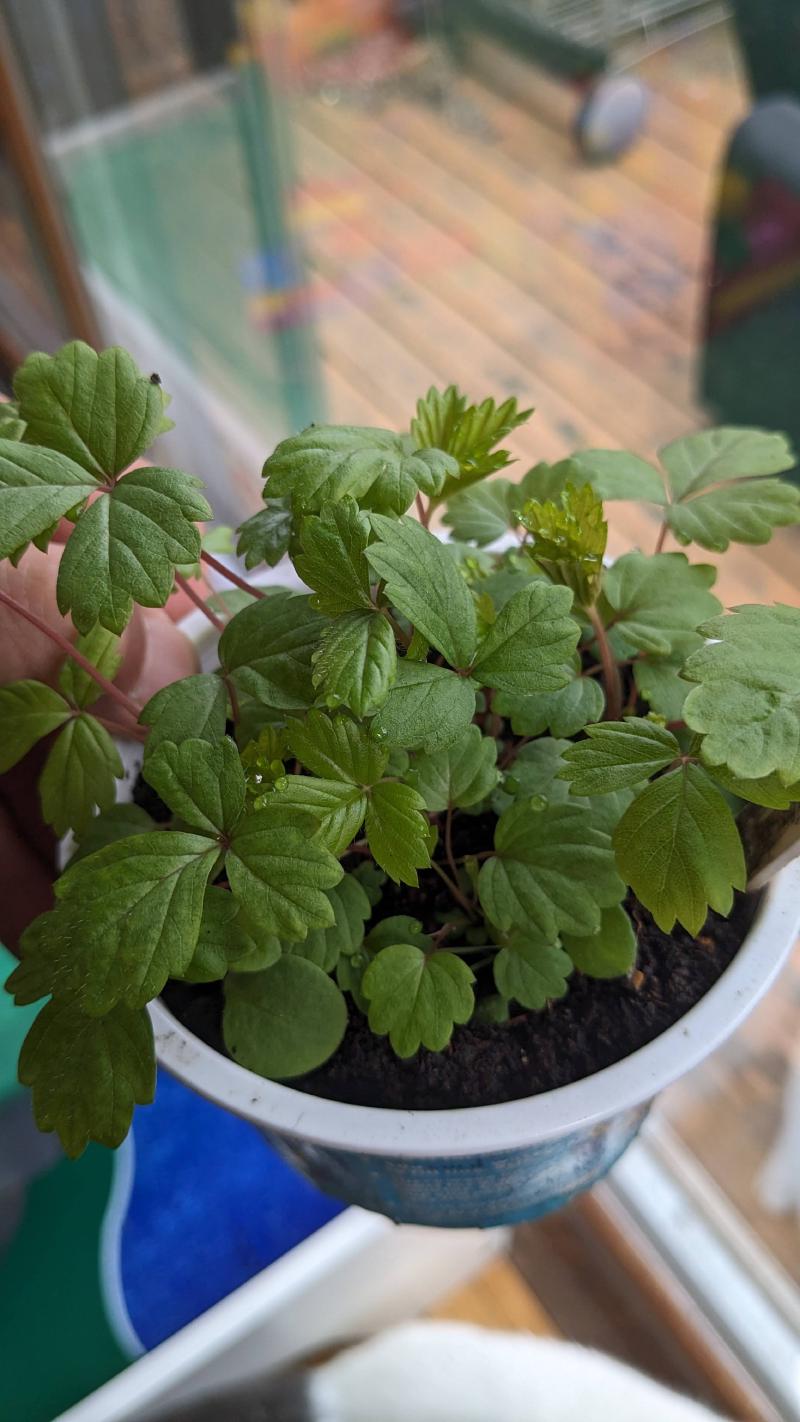My record indicates that I planted alpine strawberry seeds on February 19, 2024, which signifies they’ve been growing for about six weeks now. These seeds were quite small, similar to the tiny seeds you can often see on ripe strawberries. It’s relatively common to propagate strawberries through cloning, but they can indeed be grown from seed with a bit of patience.
Just like many other plants, I suspect that numerous strawberry varieties are open pollinated, with some being F1 hybrids. If I were growing an open pollinated variety, I could potentially cultivate the exact same strawberries found at the store. However, if dealing with an F1 hybrid, the fruit I get wouldn’t be identical.
I’ll need to continue nurturing these plants for several more weeks - likely another six to eight weeks - before they can be relocated outdoors. This weekend, I’m considering dividing the plants up and transferring them into individual pots.
The Botanical interst website says as follows. It does not produce runner! So they would be good for container, but it also means the only way to propagate is I grow from seed every year.
Homegrown alpine strawberries are bushels above store-bought whose flavor can’t compare. Wonder Blend bears small red or light yellow, intensely fragrant fruits from late spring/early summer on, taking a break in hot weather. Plants don’t have runners, so they won’t meander, making them a tidy, delicious border or container contender. If started indoors, you can expect fruit the first year. Replace every 3 years for best production or add a few new plants annually. Perennial in USDA zones 5–9.

